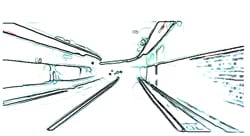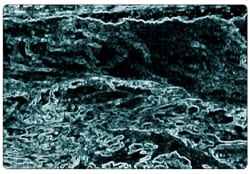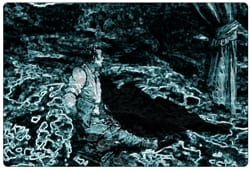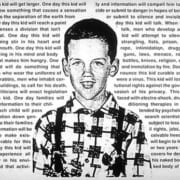Rudy Lemcke: City of the Future
Lemcke Index | City of the Future Essay | Preview of video | Artist’s Homepage Link
City of the Future (after Tarkovsky’s Solaris)
SomArts Gallery
San Francisco, California
June, 2007
Notes on the Future
1. The place that you set out for is never the place you end up.
2. This particular “future,” which is being presented at SomArts Gallery, began when I bought a copy of the 17th century alchemical text titled, Atalanta fugiens.
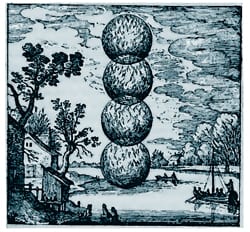 |
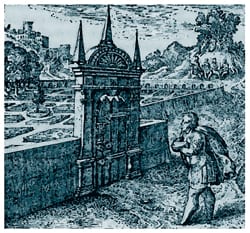 |
 |
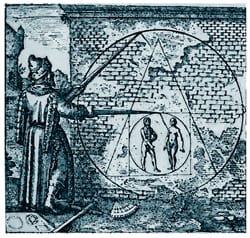 |
Michael Meyer’s alchemical emblem book Atalanta fugiens was first published in Latin in 1617. It was a most amazing book as it incorporated 50 mysterious emblems with epigrams and a commentary. It extended the concept of an emblem book by incorporating 50 pieces of music—the ‘fugues’ or canons. In a sense it was an early example of multimedia.
3. My project started out with the idea of creating an installation that situated: 1) contemporary ideas of science and technology, and current ideas of subjectivity—specifically sexuality, gender and identity against the backdrop of 2) proto-scientific theory manifested in 17th century alchemy and contemporaneous ideas about the soul and spiritual transformation.
4. In the process of developing this piece I used a type of “free-association” research that lead me on odd pathways through early alchemy, contemporary theories of science and technology, science fiction, through utopian systems, polymorphic identities, the politics of the 60s, and cities of the future.
5. During the time that I was reading, thinking, and developing the idea for this installation I kept returning to Tarkovsky’s 1972 film classic, Solaris, and the novel that inspired it by Stanislaw Lem.
5.1 Solaris: Plot Summary. Psychologist Kris Kelvin is assigned to investigate a space station near the mysterious oceanic planet Solaris. Kelvin arrives at the space station and gradually discovers that the alien ocean can produce physical replications of people from the darkest places of memory—“visitors” from one’s past. Kelvin’s deceased wife turns up and they begin a complex relationship. Later, the only two other humans on board the station, who have been encountering nightmarish “visitors” of their own, persuade Kelvin to transmit his brain waves towards the ocean in hopes of neutralizing its effects. Eventually, the “visitors” disappear along with Kelvin’s re-created wife. The two surviving members of the original crew escape; but Kelvin decides to stay behind on the planet with the memory of his lost love.
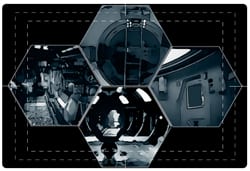 |
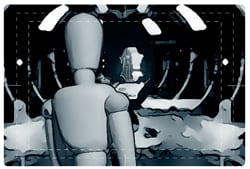 |
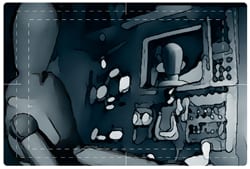 |
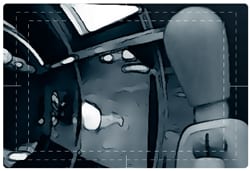 |
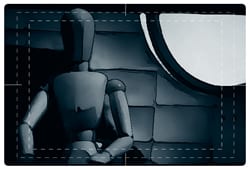 |
 |
 |
 |
6. I wrote a screenplay and created a storyboard for an anime-style re-make of the film. This project, Solaris-Remix, was a queer reading of the narrative where the protagonist and his “visitor” were male lovers. The story generally followed the plot line of the book and film but was structured as a series of transmissions (from the planet) that would be presented as a serial video project to be viewed on the Web. The intention was to cause—by the simple gender flip of the main characters—a ripple through the narrative, in order to reveal what I consider the generative dynamic of the text—that part of the narrative from which the central theme flows—embodied in the relationship of the protagonist and his visitor; staged on the technological world of the space station, and set in motion by an unknowable presence (the planet).
7. But I realized 2 things after writing the script: 1) that the project was much greater than I was capable of successfully realizing within the limitations of the funding and timeline for the project; 2) that there would be very real and unwanted copyright struggles with the remaking of this very famous film.
8. So I began thinking about the story and the entire project from a different angle. It was always the tension (the irreconcilable conflicts set up in Language itself; of being inside and outside—of being the origin and destination) of Solaris that I was getting at anyway. So I began mapping out what would turn out to be the dual channel video projection that is the central element in this exhibition.
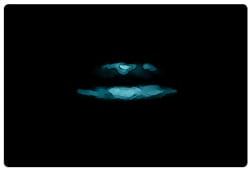 |
 |
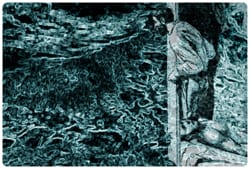 |
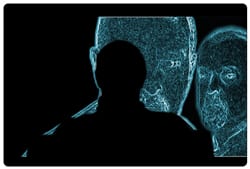 |
 |
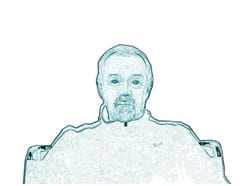 |
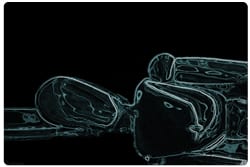 |
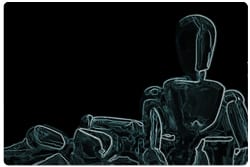 |
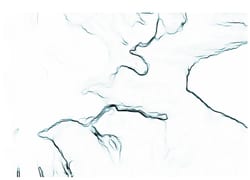 |
 |
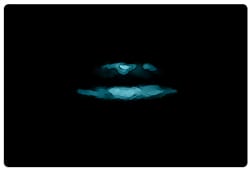 |
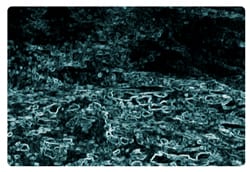 |
9. The actual plot structure of the original text and film faded into the background as the internal machine of the narrative revealed the underlying movement between (desire and death), (technology and power).
10. This is the dialectic that is played-out between the two screens of the installation.
10.1 City of the Future – Loop. The first screen presents an animated loop of one of Tarkovsky’s most memorable scenes in Solaris. The sequence is labeled, City of the Future on the newly released DVD version of the film, and is where I got the title for this section of the installation and for the entire project as a whole.
This extended scene is from the point of view of a character named Berton (who has recently returned to Earth from Solaris to ask Kelvin for help and to warn him of the dangers of Solaris). The scene is a long car ride into an anonymous city. As a matter of film history, the scene was actually shot in Tokyo. And although the Japanese city circa 1970 may not look very futuristic to contemporary audiences, its impression on Soviet viewers at the time of the film’s release was probably quite different. At any rate, this one scene was the foundational visual trope for the video. It sets up an unfulfilled expectation that in many ways parallels my (rarely seen) video project from 2002 titled, Road to the Spiral Jetty—where a cathartic climax is denied in order to shift the viewers role back upon her/himself.
10.2 Solaris – Loop. The second screen presents a cycle of videos that are titled as follows: Wittgenstein and the Problem of Other Minds; The Color of Water; Docking; Ghosts in the Machine; The Death of Bréton; Mimique; Infinite Loop; Escape Pods; Mourning becomes Ecstatic; and finally. Untitled (Solaris). I am intentionally passing over these pieces in silence and leaving them un-dissected by commentary.
11. At some point in the making of this video project, I (truly) by chance, came across a copy of Max Ernst’s, Une Semaine du Boite. Several images from this piece are re-presented in, The Color of Water, section of the Solaris – Loop.
The internal structure at play in the reinterpreted images from Max Ernst’s collage novel depict the relationship of the self to consciousness/subjectivity to Language—a relationship that is unable to be held in stasis and can only be represented dynamically in visual or textual tension.
12. I decided to include the traces of my working process as part of the installation as well as a few miscellaneous elements and after-thoughts such as these notes. And so the exhibition includes (along with the dual-channel video projection): a neon sculpture, The Future; a series of reinterpretations of Max Ernst’s collages, the screenplay and storyboards for Solaris-Remix; screen grabs from the final video projection piece, City of the Future; images from Michael Meyer’s Atalanta Fugiens; (where this project began) and finally, 2 small, identical, reproductions of Bruegel’s, Hunters in the Snow—an image that appears during the “weightless scene” in the library of the Tarkovsky’s, Solaris.
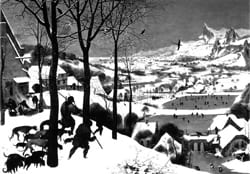 |
 |
13. This is where I ended up.
14. The City of the Future, is somewhere in the space between these things—where we find ourselves—in the future as well as in the past—in these words and things, and not.
Rudy Lemcke
2007

